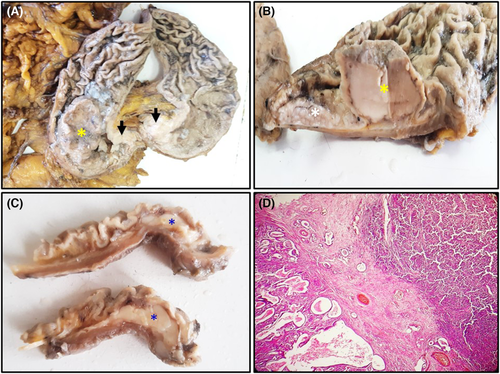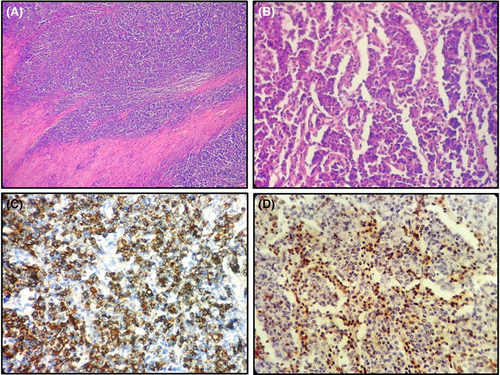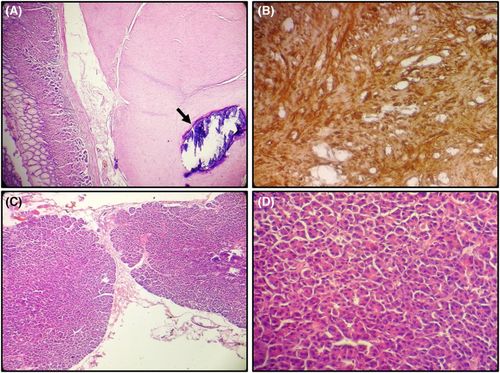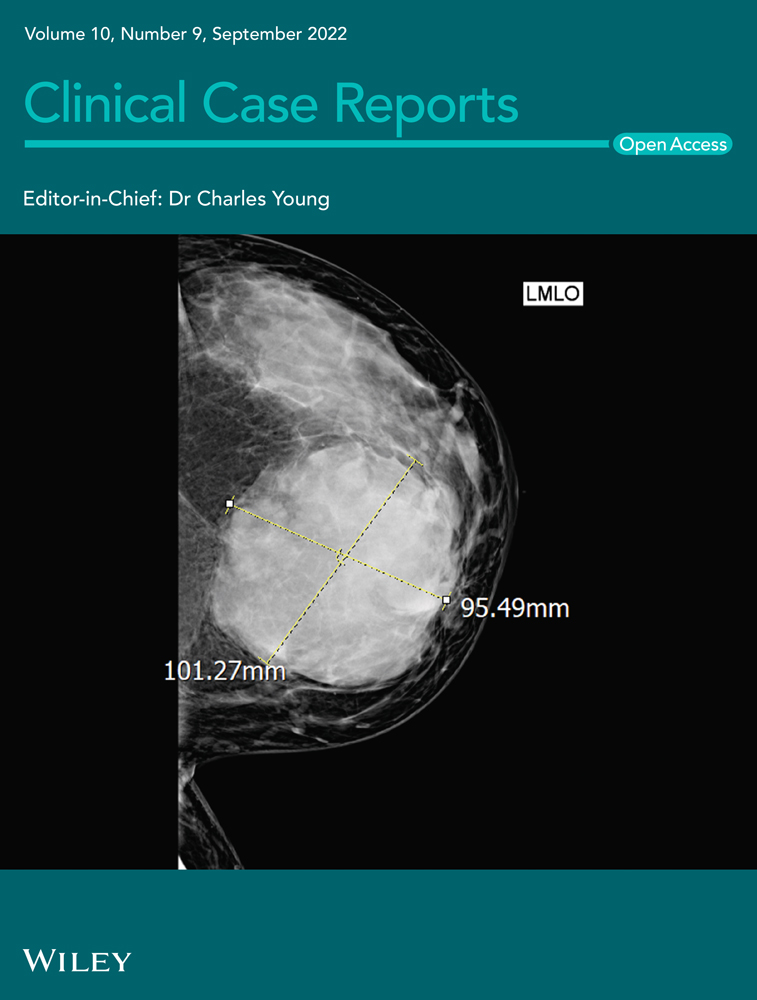An unusual simultaneous occurrence of gastric carcinoma with lymphoid stroma, calcified leiomyoma and ectopic pancreas
Abstract
Gastric carcinoma with lymphoid stroma is a rare variant of gastric carcinoma accounting for 1%–7% of gastric carcinomas. Its association with gastric leiomyoma and ectopic pancreas is extremely rare. We herein report an unusual simultaneous occurrence of gastric carcinoma with lymphoid stroma, calcified leiomyoma, and ectopic pancreas.
1 CLINICAL IMAGE
A 65-year-old woman with a past medical history of breast cancer and hypertension, presented with a 3-month history of epigastralgia. Upper gastrointestinal endoscopy showed a vegetative mass in the antrum. Histological examination of the biopsy specimens revealed gastric adenocarcinoma. The patient underwent subtotal gastrectomy. Gross examination of the surgical specimen disclosed two contiguous mass lesions located in the antrum (Figure 1A,B). The first tumor was polypoid sharply demarcated from the surrounding mucosa. The second tumor occupied the anterior and posterior wall of the stomach. In the fundus, there was a 2-cm submucosal tumor (Figure 1C). Microscopic examination of the surgical specimen showed the coexistence of two tumor components including gastric carcinoma with lymphoid stroma and tubular adenocarcinoma (Figures 1D and 2A,B). Immunohistochemical study showed positive immunostaining of tumor cells with cytokeratin (Figure 2C). The prominent lymphocytic infiltrate of the stroma was CD3 positive (Figure 2D). The 2-cm submucosal lesion corresponded to a calcified leiomyoma (Figure 3A) which showed positive immunostaining with SMA and desmin (Figure 3B).1, 2 We also incidentally discovered the presence of a tiny foci of ectopic pancreas within the greater omentum intermixed with adipose tissue (Figure 3C,D). On postoperative day 7, the patient died due to perianastomotic abscess and peritonitis.



AUTHOR CONTRIBUTIONS
Faten Limaiem prepared, organized, wrote, and edited all aspects of the manuscript and prepared all of the histology figures in the manuscript. Sahir Omrani participated in the conception and design of the study, the acquisition of data, analysis and interpretation of the data. Both authors read, edited, and approved the final version of the manuscript. They contributed equally to preparing the manuscript and participated in the final approval of the manuscript before its submission.
ACKNOWLEDGMENTS
None.
CONFLICT OF INTEREST
None declared.
ETHICAL APPROVAL
All procedures performed were in accordance with the ethical standards. The examination was made in accordance with the approved principles.
CONSENT
Published with written consent of the patient.
Open Research
DATA AVAILABILITY STATEMENT
The data that support the findings of this study are available from the corresponding author upon reasonable request.




